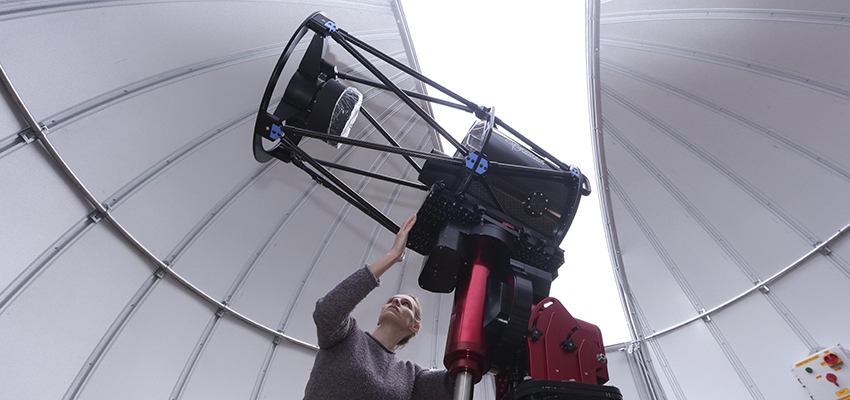
HWS News
27 July 2020 • Faculty • Research Data from Perkin Observatory Confirms Existence of New Exoplanet
Observations with the Colleges’ Richard S. Perkin Observatory have been used to help confirm the existence of a new extra-solar planet, according to an article co-authored by Associate Professor of Physics Leslie Hebb that appears this month in The Astrophysical Journal.
NASA’s Transiting Exoplanet Survey Satellite (TESS), which was launched into space a few years ago, is discovering new extra-solar planets — planets revolving around a star other than the Sun — around the nearest and brightest stars. “However, not every candidate is a genuine planet,”says Hebb.
Hebb’s role in ascertaining the existence of the planet was to collect a series of brightness measurements from one candidate host star named TOI-1266, which is 117 light years from Earth. “I combined this data with velocity measurements of the star taken by my colleagues to confirm the existence of the planet and measure its mass (about 10 times the mass of Earth) and radius (about 2.5 times the size of Earth),” she says.
The planet was one of two discovered orbiting TOI-1266, Hebb says. “They are orbiting a much cooler star than our sun, but their orbits are also much closer than our orbit,” she says. “The period of the inner planet is about 11 days (compared to 365 days for our Earth).”
The results of Hebb’s finding were published in an article titled “A Mini-Neptune and Venus-Zone Planet in the Radius Valley Orbiting the Nearby M2-dwarf TOI-1266: Validation with the Habitable-Zone Planet Finder.” Her co-authors included more than 20 academic and astronomical professionals from institutions including Princeton University, University of Texas and the Jet Propulsion Laboratory.
The article suggests that the newly-discovered planet is worth further exploration: “Our current mass constraints hint that planet c could have a predominantly non-rocky composition, which could indicate that planet c is either water-rich and/or could have retained an atmosphere despite its small size,” write the authors.
Hebb has been a member of the HWS Department of Physics since 2013. Her research interests include discovering and characterizing planets around other stars, measuring fundamental properties of low mass stars, and understanding magnetic activity on stars other than the sun. She earned her Ph.D. in physics and astronomy at The Johns Hopkins University and did post-doctoral work at Vanderbilt University and the University of St. Andrews.
